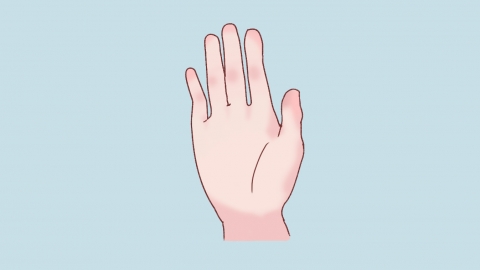What is the difference between heat in the palms and soles and night sweats?
Generally, palm and sole heat and night sweats are two distinct symptoms, differing in clinical presentation, causes, pathogenesis, associated symptoms, and treatment approaches. If discomfort occurs, it is recommended to seek timely medical evaluation and treatment at a正规 hospital. Detailed analysis is as follows:
1. Clinical Presentation
Palm and sole heat is characterized by a subjective sensation of increased temperature in the palms and soles, which may occur during the day or night. Upon touch, there may be no obvious temperature elevation, and the sensation is primarily subjective. Night sweats refer to abnormal perspiration occurring during sleep, ceasing upon waking, often soaking clothing and bedding, predominantly occurring during nighttime sleep.
2. Causes
Palm and sole heat are commonly associated with internal heat due to yin deficiency, damp-heat in the spleen and stomach, or food accumulation, which may be triggered by habits such as chronic sleep deprivation or consuming spicy and greasy foods. Night sweats frequently occur in conditions such as tuberculosis, hyperthyroidism, diabetes, and menopausal syndrome, and may also result from physical weakness or autonomic nervous system dysfunction.

3. Pathogenesis
Palm and sole heat often result from internal heat due to yin-yang imbalance, with yin deficiency leading to internal heat or damp-heat accumulating in the hands and feet, causing localized warmth. Night sweats mainly stem from yin-yang imbalance, insecure defensive qi, and abnormal perspiration. During sleep, yang energy enters inwardly, causing yin fluid to lose containment and leak outward.
4. Associated Symptoms
Palm and sole heat are often accompanied by symptoms such as dry mouth and throat, irritability, constipation, and dark yellow urine. Night sweats may be accompanied by low-grade fever, fatigue, cough, weight loss, palpitations, insomnia, and other manifestations, with variations depending on the underlying cause.
5. Treatment Approaches
Management of palm and sole heat should be based on the underlying cause. For yin deficiency, medications that nourish yin and reduce internal heat, such as Zhibai Dihuang Pills, may be taken under medical guidance. For damp-heat conditions, heat-clearing and dampness-resolving treatments such as Longdan Xiegan Pills may be selected. Night sweats require treatment of the underlying disease—for example, anti-tuberculosis therapy for tuberculosis—combined with medications that strengthen qi to secure the exterior and nourish yin to reduce sweating, such as Xuhan Ting Granules or Muli San.
In daily life, if these symptoms occur, attention should be paid to their duration and associated manifestations. Prompt lifestyle adjustments are necessary, including avoiding late nights and excessive fatigue, and maintaining a light diet. If symptoms persist or worsen, timely medical consultation is essential to identify the underlying cause and receive appropriate treatment, avoiding self-medication.




